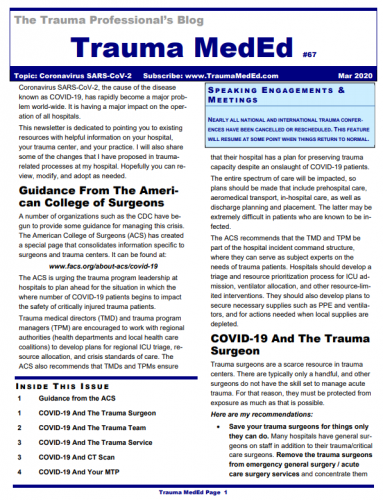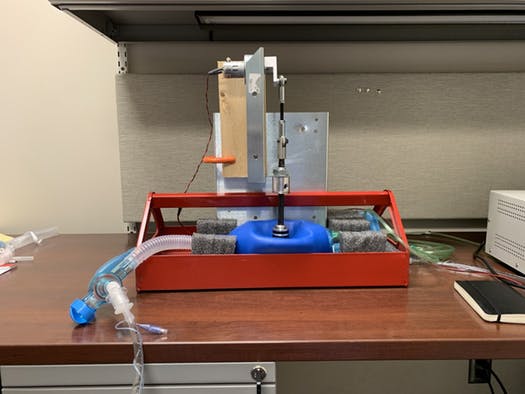Welcome to the current newsletter. I am releasing this to nonsubscribers early due to the relevance of the information it contains.
Topics covered include:
- Guidance from the American College of Surgeons
- COVID-19 and the trauma surgeon
- Coronavirus and your trauma service
- Coronavirus and the trauma team
- CT scan safety and the coronavirus
- Changing trauma rounds for coronavirus safety
- Coronavirus and your massive transfusion protocol (MTP)
The April issue will be released next month and will be a followup to this one. I’m sure we will learn quite a bit about the virus and our response to it in the ensuing month.
And please send me your comments, updates, or tips you have found helpful at your hospital! I’ll include them in the next newsletter.
To download the current issue, just click here! Or copy this link into your browser: http://bit.ly/TME202003.




